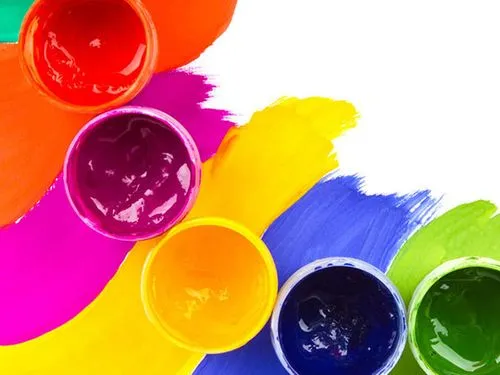Characteristics of multiple pigments/dyes
Water-based pigments
Water based pigments are a new type of environmentally friendly pigments. Compared with traditional pigments, they have advantages such as non-toxic and odorless properties. Compared with traditional pigments, they are more in line with the concept of health and environmental protection, and have become a trend in pigments.
Oil painting pigments
Oil painting pigment is a specialized painting pigment for oil painting, which is made by adding oil powder and grinding with glue. Most of the products sold in the market are tube fittings, which can also be self-made.

Oil painting pigment is a physical substance formed by mixing and grinding mineral, plant, animal, and chemically synthesized pigments with blending agents such as flaxseed oil or walnut oil. Its characteristic is that it can be dyed onto other materials or attached to a certain material to form a certain pigment layer, which has a certain plasticity. It can form various shapes and textures that painters want to achieve based on the use of tools. The various hues of oil painting pigments are determined based on the hue of the pigments, and oil can play a role in making the hue of the pigments slightly darker and more saturated.
Chinese painting pigments
Chinese painting pigments, also known as Chinese painting pigments, are specialized pigments used to paint traditional Chinese painting. The products sold are generally tube packaging and pigment blocks, but there are also pigment powders available. The classification of traditional Chinese painting pigments. Traditional Chinese painting pigments are generally divided into two categories: mineral pigments and plant pigments. In terms of usage history, there should be minerals first, followed by plants, just like when using ink, there should be pine smoke first, followed by oil smoke. The bright colors left on ancient rock paintings were analyzed and found to be using mineral pigments (such as cinnabar). The prominent feature of mineral pigments is that they are not easy to fade and have bright colors. Most people who have seen Zhang Daqian's splashed color paintings in his later years have this impression. Large areas of stone blue, stone green, and cinnabar can uplift people's spirits! Plant pigments are mainly extracted from trees and flowers.
Watercolor pigment
Water powder is the abbreviation for water powder pigment, which has various names in China, such as advertising color, promotional color, etc. Belongs to a type of watercolor, which is an opaque watercolor pigment. Due to its affordability, ease of learning and use, it is commonly used as an introductory painting material for beginners to learn color painting. Its usage simulates oil painting techniques.
The performance of water powder
The limitations of watercolor color purity and brightness are that when watercolor pigments are wet, their color saturation is as high as oil painting pigments. However, when they dry, due to the action of powder and the loss of color luster, their saturation decreases significantly, which is the limitation of their color purity. The improvement of water powder brightness is achieved by diluting, adding powder, or using light colors with more powdery pigments. Its dry and wet changes are very large, often with only a small amount of powder added to some colors. When wet and dry, its brightness shows a difference of dark or light, which is the dry wet reaction of watercolor pigments. Due to the fact that the color of watercolor generally becomes lighter after drying, making good use of watercolor is the most difficult problem to solve in watercolor painting technology. And the colors containing powder precisely fill the picture with the unique "pink" quality of watercolor painting, and there are particularly rich intermediate colors. However, the color delicacy of watercolor painting is still much lower than that of oil painting.
Due to the limitations of the properties of watercolor pigments, there are few large-scale works with higher specifications that use watercolor pigments for creation.The personality differences of watercolor pigments. Most colors of watercolor pigments are relatively stable, such as earth yellow, earth red, ochre, orange yellow, medium yellow, light yellow, olive green, pink green, ultramarine, cobalt blue, lake blue, and so on. However, the deep red, rose red, green lotus, violet and other colors in watercolor pigments are extremely unstable, prone to color reversal and difficult to cover. There are relatively few types of transparent colors in watercolor, with only a few colors such as lemon yellow, rose red, and green lotus. To paint watercolor well, it is necessary to fully grasp the individuality of each watercolor pigment, understand its color reception ability, coverage ability, and color value. These issues need to be constantly practiced, and practice makes perfect.
The limitations of water powder
There will be no unevenness during large-scale coloring.

